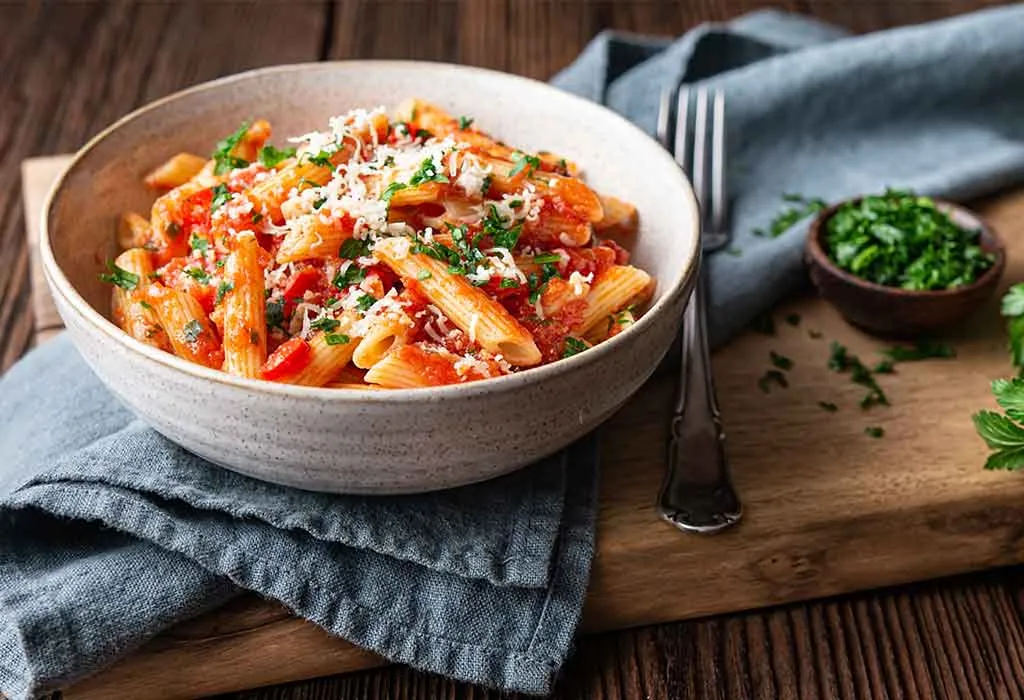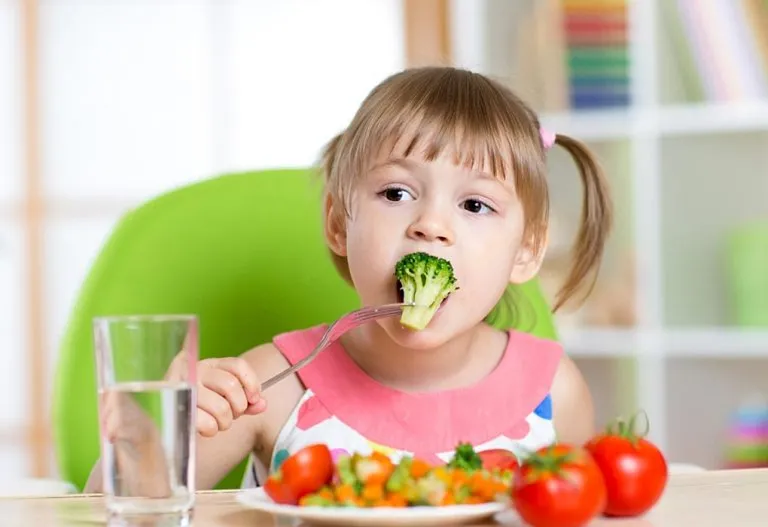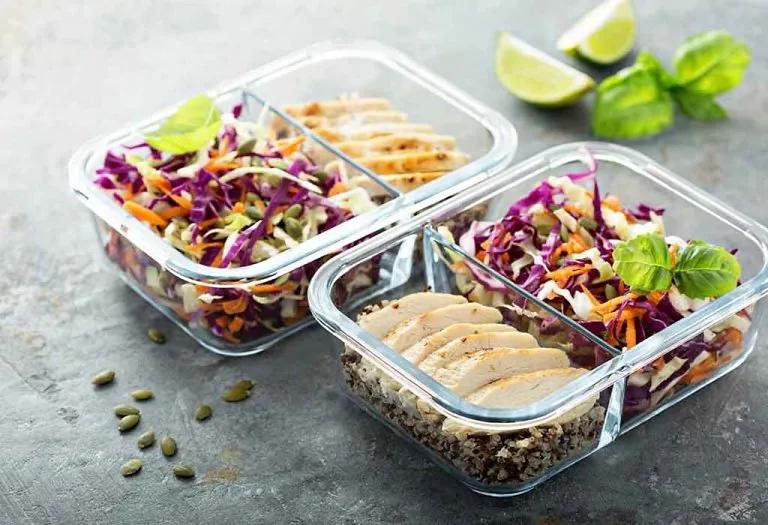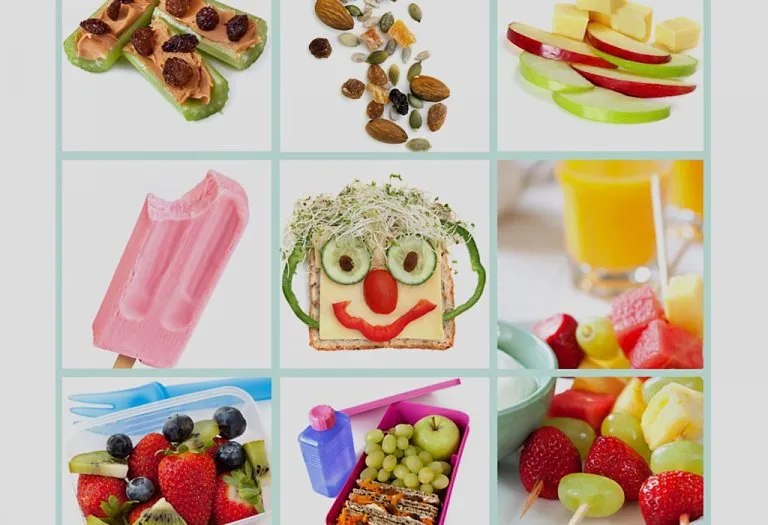How to Get Kids to Eat Vegetables – Tips for Parents
- Why Is It Important for Children to Eat Vegetables?
- Why Some Children Don’t Like to Eat Vegetables?
- How to Get Your Child to Eat Vegetables?
- Delicious Recipes to Get Kids to Eat Vegetables
- What Parents Should Avoid Doing While Making Their Kids Eat the Veggies?
- FAQs
You give your kiddo a bowl of broccoli or carrots to munch on, and your kid may take forever to finish it. Does this sound like it is a story of your household? If it is, you’re likely not alone. This is a struggle most moms experience in their day-to-day lives. Why is there an aversion towards vegetables in some kids, and what can you do to make your kid eat his greens? If you have these questions on your mind, too, we may be able to help you overcome this constant struggle to feed veggies to your child. Learning how to get kids to eat vegetables can be challenging, but with patience and creativity, it’s possible to turn mealtime into a fun and healthy experience.
Why Is It Important for Children to Eat Vegetables?
Vegetables are a powerhouse of essential nutrients. Here’s why it is important to make them a non-negotiable part of your child’s daily diet.
- With so many junk food options available, children often ignore nutritious meals containing vegetables.
- There is no substitute for vegetables, so parents must find creative ways to include them in their child’s diet.
- Vegetables are rich in vitamins, minerals, fiber, and antioxidants, crucial for the proper functioning of vital organs (1).
- Regular veggie intake helps protect children from serious health problems in the long run.
- A balanced diet should include a variety of colorful vegetables for maximum nutritional benefits.
- On average, children up to 8 years old need 2 to 3 servings of vegetables per day (2).
Why Some Children Don’t Like to Eat Vegetables?
You may think your kid may be the only one making faces at the sight of vegetables. You’ll be surprised to know that it is very common for children to dislike vegetables while growing up. Read on to understand why your kid dislikes eating vegetables:
- Your child may cringe while eating Brussels sprouts or other such vegetables because of their peculiar or bitter taste. The presence of calcium and phytonutrients in most vegetables makes them bitter and thus unpalatable for children.
- Disliking vegetables may mostly be seen in kids in the age bracket of 2 to 6 years of age. This is because they may develop food neophobia or fear of unknown or new food. This is usually a behavioural problem that some kids of this age experience.
- Also, whenever we eat something for the first time, we may not like it. The story could be completely opposite after developing a taste for the same foods. The same applies to kids, who may start liking their vegetables as they grow. It may take 10 to 15 efforts on average to finally make your child accept the taste of a particular vegetable.
How to Get Your Child to Eat Vegetables?
Making kids to eat vegetables may seem tough. But here are some tips that may help you make your kid polish off veggies from their plate (3):
1. Lead By Example
As clichéd as it may sound, it sure does work! If you eat vegetables in front of your children, they will do that, too. Kids like to imitate their parents and siblings, and that is why it is best to lead them by example.
2. Give Them Time
Do not expect your kid to eat any vegetable you offer them for the first time. As discussed above, kids may take time to familiarise themselves with different foods, and once they are comfortable with the taste, they may begin eating veggies. So, do not rush. Instead, take things slowly and introduce them to different vegetables one by one rather than bulking up on them.
3. Avoid Creating a Hullabaloo
When it comes to feeding vegetables, do not make it appear as if it is something grand. Make it a regular eating experience. Also, do not threaten or bribe your child to make them finish their vegetables; otherwise, finishing up vegetables on the plate will become a task for them, which they will develop a liking for later.
4. Add a Touch of Beauty
Whatever appeals to the eye can appeal to the palate, too. Introduce vegetables to your child in a fun and appealing manner to grab their attention. For instance, carve a flower out of a carrot or make a mouse from a cucumber and watch your kiddo dive into their meal.

5. Give Options
This trick works for sure. Whenever you cook vegetables, try and cook two or more options for your kiddo to choose from. This can give your kid the feeling of independence, and he will feel free to choose.
6. Use Peer Pressure
Well, peer pressure may not only work in the field of academics, but it may also be helpful in making your kiddo eat veggies. Invite friends over for dinner (who like to eat vegetables) and just see how, in order to impress their friends or to gain brownie points in front of you, your kid will finish all their veggies.
7. Spice It Up
Kids love to experiment with various tastes and flavours. Add some zing to boring vegetable meals with some dressing, seasonings, or dips.
8. Let Them Pick Vegetables
Take your little one to the grocery store with you and let them pick vegetables. Nicely arranged fresh vegetables are a visual delight and can lure your kid into eating them too, as it will remind them of their little shopping activity.
9. Let Them Cook
Cooking can excite young children, and if you involve them in safe cooking, they may be tempted to try out their piece of work. The entire cooking and eating experience may become one fun activity for your kid.
10. Praise Your Kid
If your kid makes an effort and tries to eat a particular vegetable, make sure you appreciate their efforts. Words of appreciation will boost confidence in your child, and they will be trying out different vegetables in no time!
11. Experiment With Vegetables
If your kid does not like stir-fried carrots, you may feed him carrots in the form of soup. You can change the form of other vegetables in a similar manner. Sometimes, the texture of a particular vegetable makes children refuse them. Try out different textures to know what your kid likes the most.

Delicious Recipes to Get Kids to Eat Vegetables
Getting kids to eat veggies can be a challenge, but with the right recipes, you can turn healthy ingredients into tasty meals they’ll love! These fun, flavorful dishes are packed with nutrients while keeping picky eaters happy.
1. Cheesy Veggie Quesadillas

Ingredients
- Whole wheat tortillas
- Shredded cheese (cheddar or mozzarella)
- Finely chopped bell peppers
- Grated carrots
- Spinach (finely chopped)
- Olive oil or butter
How to Make
- Heat a pan over medium heat and lightly grease it with olive oil or butter.
- Place a tortilla on the pan and sprinkle shredded cheese evenly.
- Add chopped bell peppers, grated carrots, and spinach on one half of the tortilla.
- Fold the tortilla in half and cook until golden and crispy (about 2-3 minutes per side).
- Cut into fun triangles and serve with yogurt dip or salsa.
2. Hidden Veggie Pasta Sauce

Ingredients
- 1 cup cooked pasta
- 1 carrot (steamed and pureed)
- ½ cup tomato sauce
- ½ cup pureed butternut squash
- 1 clove garlic (minced)
- 1 tsp olive oil
- Salt & pepper to taste
How to Make
- Heat olive oil in a pan and sauté garlic until fragrant.
- Add pureed carrot and butternut squash, stirring well.
- Pour in tomato sauce and simmer for 5-7 minutes.
- Season with salt and pepper, then mix with cooked pasta.
- Top with grated cheese for extra kid appeal!
3. Sweet Potato & Zucchini Fritters

Ingredients
- 1 medium sweet potato (grated)
- 1 small zucchini (grated and squeezed to remove moisture)
- 2 tbsp flour
- 1 egg
- ¼ tsp salt
- 1 tbsp olive oil
How to Make
- Mix grated sweet potato, zucchini, flour, egg, and salt in a bowl.
- Heat olive oil in a pan over medium heat.
- Scoop small portions of the mixture and flatten into patties.
- Cook for 3-4 minutes per side until golden brown.
- Serve with ketchup or a yogurt-based dip.
What Parents Should Avoid Doing While Making Their Kids Eat the Veggies?
Here are a few things you can avoid to make your kid eat their vegetables:
1. Do Not Force Feed
You can be insistent, but you should not force-feed. Any kind of force-feeding can have a negative impact on your child, and they may completely refuse to eat their veggies. Let your kid adjust to the new taste, and they may eventually start liking the vegetable.
2. Do Not Give Anything Outside Meals
Refrain from offering anything else in between the meals because hunger pangs can make your kid relish the veggies.
3. Do Not Prepare Special Meals
Offer your kid what everyone else will be eating. This way, you may be snubbing the habit of picky eating.
4. Do Not Label Your Kid
Refrain from giving any label, tags or names, such as fussy-eater, picky-eater, etc., to your kid. This can give them a reason to stay away from vegetables.
5. Do Not Bribe
Bribing by giving them a candy stick or letting them play a video game may solve the problem in the short run, but it may lead to a negative association towards food in the longer run.
6. Do Not Sneak the Vegetables in Food
You may win a small war by doing this, but not the bigger battle of helping your kid develop a healthy habit of eating vegetables.
7. Do Not Starve Them
If your little one is taking time to get adjusted to vegetables, it is totally okay! You have to remember that every child has their own pace, so do not rush. If they are not eating their vegetables, give them another healthy alternative, like porridge, to meet their nutritional needs, instead of being strict and not giving them anything. Starving your child will only affect their health and emotional balance.
FAQs
1. Can picky eating be a sign of a sensory processing issue?
Some children refuse vegetables due to texture or smell sensitivities, which may indicate sensory processing differences. If your child gags, avoids certain colors, or reacts strongly to food textures, consult a pediatrician or occupational therapist for guidance.
2. Do vegetables taste different to kids than to adults?
Research suggests children have more taste buds, making bitter flavors (common in greens like broccoli or kale) more intense. Over time, their taste preferences evolve, so repeated exposure in fun ways can help them adapt.
3. Should I “hide” veggies or encourage visible eating?
While sneaking veggies into sauces or smoothies ensures intake, visible exposure (like letting kids pick veggies at the store or grow them in a garden) fosters long-term healthy habits. A mix of both strategies works best!
We hope this post helps you overcome your vegetable-feeding woes. Remember that your kid will take their own sweet time to get used to the taste of different vegetables. All they need from you is a little bit of patience, and they will be exploring the world of vegetables in the course of time.
References/Resources:
1. National Library of Medicine – Health Benefits of Fruits and Vegetables
2. Mayo Clinic – Nutrition for kids: Guidelines for a healthy diet
3. Cleveland Clinic – Picky Eater? Here’s How To Get Kids To Eat Veggies
Also Read:
Fruits and Vegetables for Kids
Meal Ideas for Picky Childrens
Ways to Develop Healthy Eating Habits in Children
Was This Article Helpful?
Parenting is a huge responsibility, for you as a caregiver, but also for us as a parenting content platform. We understand that and take our responsibility of creating credible content seriously. FirstCry Parenting articles are written and published only after extensive research using factually sound references to deliver quality content that is accurate, validated by experts, and completely reliable. To understand how we go about creating content that is credible, read our editorial policy here.























